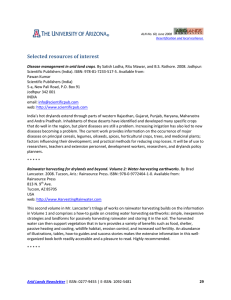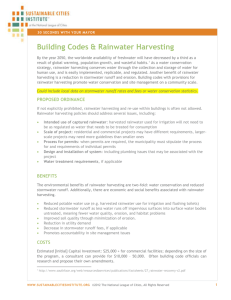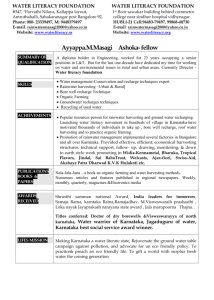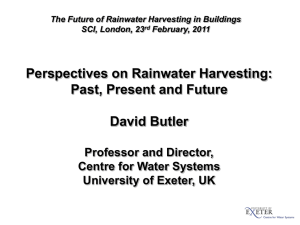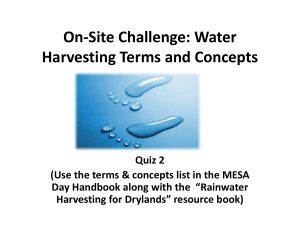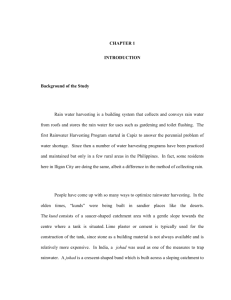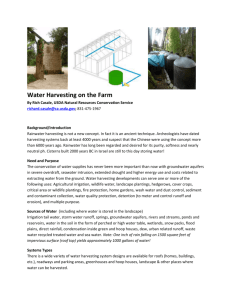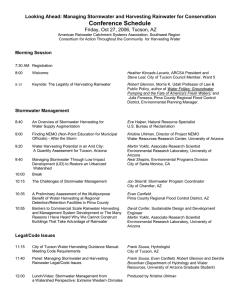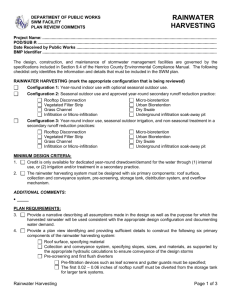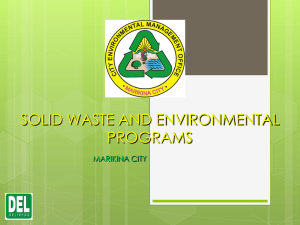Click on image to content
advertisement
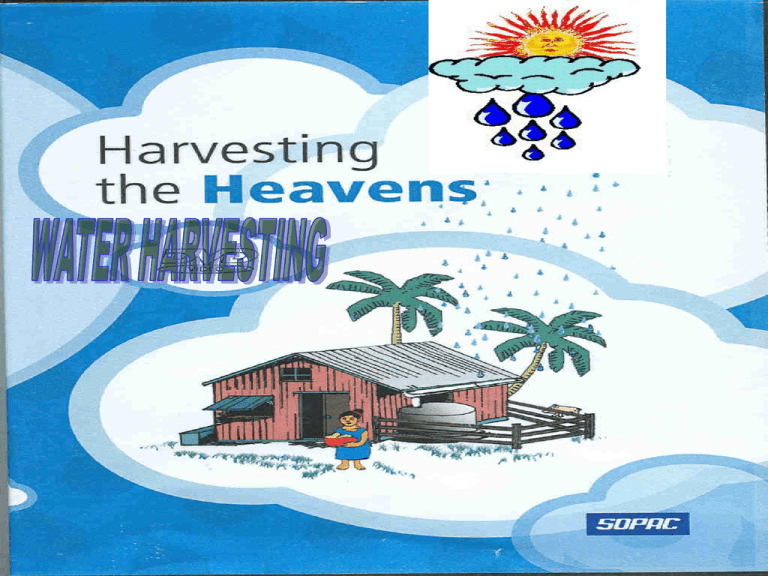
DONE
PREETHY.P
MEERA KUMAR
STEFFI SAM
BY
{X-O}
GOVT.H.S.S.FOR
GIRLS,COTTON HILL
INTRODUCTION
The ancient civilization flourished along the bank of
rivers,where water was freely available.As the population
grew,man had to move away from rivers and for the needs
of water, had to search for solutions like storing of rain water
or surface run-off. Thus emerged the practice of
harvesting.
water
AIMS
To study about water harvesting.
To promote the conservation of water.
To spread awareness & interest among the public.
DATA COLLECTION
Rainwater harvesting means making use of each & every drop
of rainwater to recharge the groundwater, by directing the
rainfall to go into the well or under the ground, without
wasting the same.
RAINWATER HARVESTING
The main aim of water harvesting is to conserve rainwater in
the areas where it falls so that it may satisfy local needs.
Harvesting rainwater & recharging the water table can be
achieved through the following methods:
By using the existing well
Through percolation pits
Decentralized percolation trenches
The following are some methods used to recharge
the ground water:
Pebble bed method
Percolation pits
Recharge wells
Ridges & furrows
Check dams
Gully control / stone wall structures
Contour bunding & trenching
Land flooding
Planning & Designing the water
harvesting system
The main components involved in the planning
design of a rainwater harvesting system are:
Roof [catchment area]
Annual rainfall – Minimum 10 years average & if
possible 50 years average is taken.The wastage is
considered about 25% of total rainfall.
No: of persons in the family.
How much water can be harvested ?
The following is an illustrative theoretical calculation that highlights the
enormous potential for rainwater harvesting.
Area of plot
= 100 sq.m.
Height of rainfall = 1.1 m [1100 mm or 44 inches]
Volume of rainfall = Area of plot * Height of rainfall
= 100 sq.m. * 1.1m =110 cu.m.
Assuming that only 60% of the total rainfall is effectively harvested,
volume of water = 66,000 liters
This volume is about four times the annual drinking water requirement of
a five member family.The average daily water requirement per person is
10 liters according to IS 1172:Indian Standard Code of Basic
Requirements for Water Supply, Drainage & Sanitation.
Conclusion
Rainwater harvesting is simple & cost effective.If such
simple measures to “Catch water where it falls”, is taken by
individuals,most of the water management problems in our
state can be solved.The scope for development under
Panchayat Raj should be fully utilized to conserve precious
fresh water to solve the water scarcity.
Harvesting & conserving water is every individual’s
duty.Every drop of rain water is precious-save it.It might be
the very drop that will quench your thirst one day.
Suggestions
Reduce your needs.
Reuse or recycle as much water as you can.
Harvest & conserve water.
Take initiatives in conserving &preserving this life-giving
resources for posterity.
BIBLIOGRAPHY
Hand book on rainwater harvesting, Malanadu Development
Society
Rainwater harvesting,GOI, Department of Rural
Development, Ministry of Agriculture, may 1990
Water-the elixir of life
- 2003 C.P.R.
Fresh water resources of Kerala -2004 KSCSTE,KERALA
